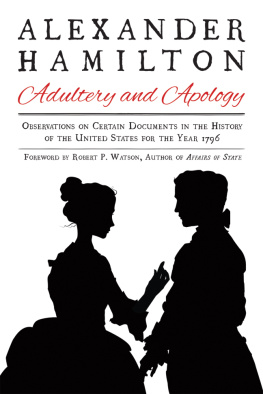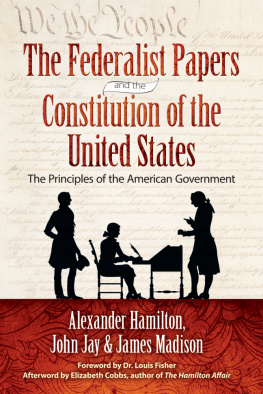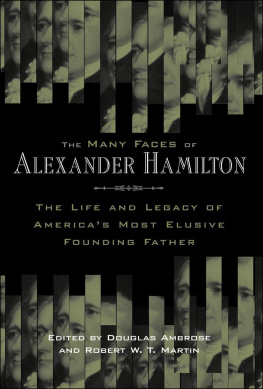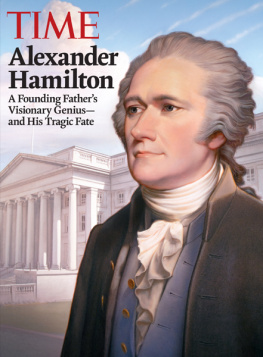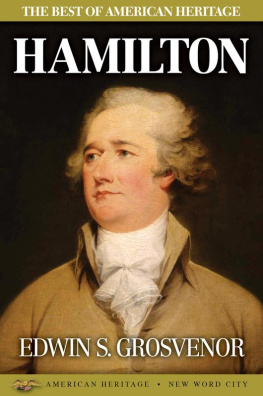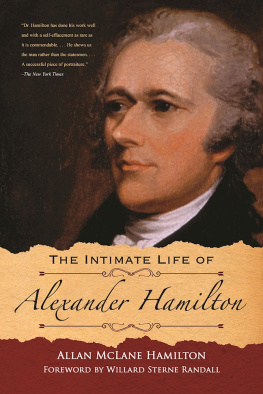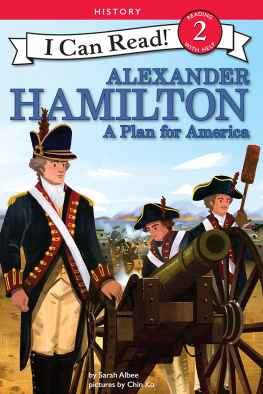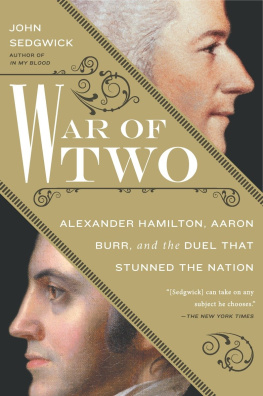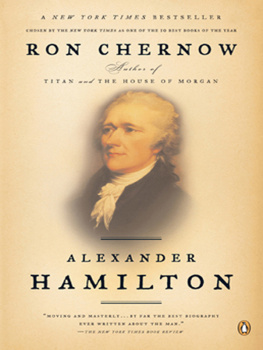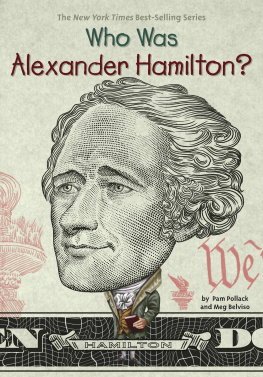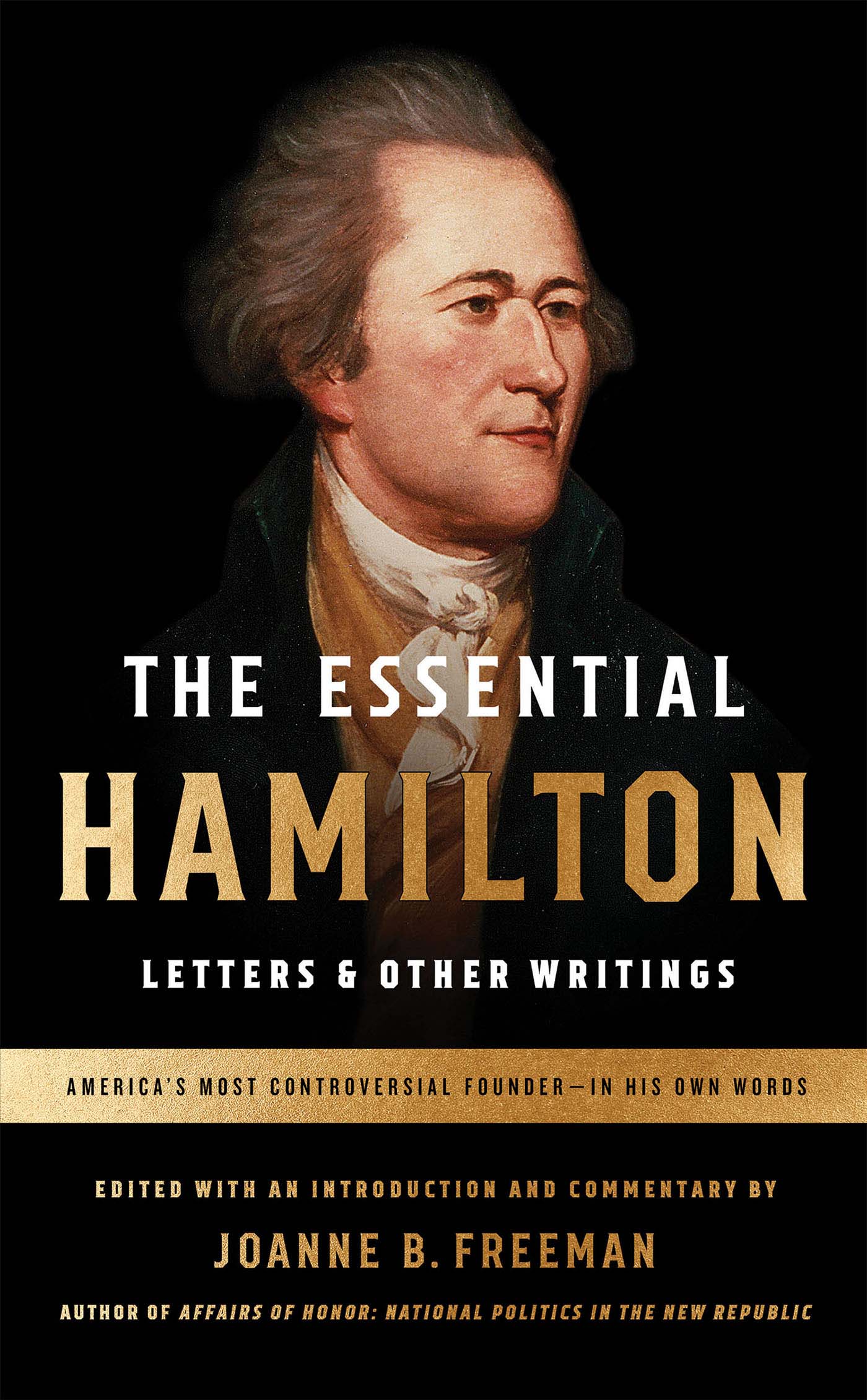THE ESSENTIAL
HAMILTON
LETTERS & OTHER WRITINGS
AMERICAS MOST CONTROVERSIAL FOUNDER
IN HIS OWN WORDS
EDITED WITH AN INTRODUCTION AND COMMENTARY BY
JOANNE B. FREEMAN

THE LIBRARY OF AMERICA
Introduction copyright 2017 by Joanne B. Freeman.
Volume compilation, notes, and chronology copyright 2017 by
Literary Classics of the United States, Inc., New York, N.Y.
All rights reserved.
No part of this book may be reproduced in any manner whatsoever without
the permission of the publisher, except in the case of brief
quotations embodied in critical articles and reviews.
Library of America also publishes Alexander Hamilton: Writings (hc: 1,108 pages), edited by Joanne B. Freeman, volume #129 in the LOA series. For a full table of contents and more information visit our website at www.loa.org.
Distributed to the trade in the United States
by Penguin Random House Inc.
and in Canada by Penguin Random House Canada Ltd.
Library of Congress Control Number: 2016960141
ISBN 9781598535365 (print)
ISBN 9781598534548 (ebook)
First Printing
The Essential Hamilton: Letters & Other Writings
is published with support from
THE BODMAN FOUNDATION
Contents
Introduction
BY JOANNE B. FREEMAN
Alexander Hamilton had a lot to say. Always. Although not yet fifty when he died, he left behind more than ten thousand letters, newspaper essays, reports, and pamphlets. As published by Columbia University Press from 1961 to 1987, his writings fill twenty-seven hefty volumes.
The Essential Hamilton offers a carefully chosen selection of his writings, including an abundance of personal letters from throughout Hamiltons life, along with a few of his pamphlets, some newspaper essays, and a representative sampling of his major papers as Secretary of the Treasury. Taken together, they are a window into Hamiltons brief and crowded life.
That life is worth exploring for many reasons. One of the nations leading Founders, Hamilton profoundly shaped the new republic. Its impossible to understand the nations founding without considering his policies and politicsthough its important to note that he was one voice among many, a reminder that the United States was born of debate and compromise, core components of a democratic politics. Given his flaws and excesses, studying Hamilton is also a reminder that the Founders were all too human, and therefore fallible; there was no guarantee that their experiment in government would succeed. And of course, Hamiltons dramatic life makes for good reading. Born in obscurity in the Caribbean, battling seemingly unbeatable odds, a one-man army of game-changing policies with a risqu love life who fell meteorically from power and died in a duel: Hamiltons trajectory of highs and lows seems like the stuff of fiction.
The best way to get to know this complex character is through his writings, though the portrait that emerges isnt always favorable: Hamilton was a notoriously difficult man. His politics and policies alone earned him a lifetime of controversy; in many ways, he was an unapologetic extremist. In a nation that had just broken away from a monarchy and was wary of centralized power, Hamilton was an unfailingly ardent advocate of a strong national government. Some considered him a monarchist aiming to subvert the newborn republic. Others distrusted his dealings with moneyed men and his obvious interest in courting the wealthy and powerful to support the new government. And many disapproved of his habit of seeking military solutions to political problems; he was sometimes far too eager to stifle political protest with armed force. For these reasons and more, Hamilton was the lightning rod of Washingtons administration.
His politicking was no less abrasive. Hamilton practiced a hard-edged style of politics, savaging his foes in newspapers and pamphlets while aggressively advancing his plans behind the scenes. His relentless promotion of his financial program as Secretary of the Treasury inspired an organized and angry opposition in the national government and beyond. Alarmed at Hamiltons focus on centralizing power and attracting moneyed men, Secretary of State Thomas Jefferson and Representative James Madison actively opposed him, inviting newspaper editor Philip Freneau to move to the nations capital to start the anti-Hamiltonian National Gazette. Congressional opponents also took a strong stand, combatting Hamiltons proposals and accusing him of financial malfeasance. By 1792, Hamiltonian Federalists and Jeffersonian Republicans were at wara war that would worsen as the escalating French Revolution tangled domestic politics on American shores.
Its tempting to sum up the periods politics as a dramatic clash of titans: Hamilton versus Jefferson, the brash attack dog versus the congenial Virginia gentleman. But the divide between the two men was more than personal. They represented opposing views of the nations future that extended far beyond them. Manylike Jeffersondesired a limited national government and a largely agrarian nation, and trusted a more democratic politics. Otherslike Hamiltonenvisioned a manufacturing nation headed by a powerful national government, and distrusted the tides of democracy. Convinced that Hamiltons policies would create a New World polity as corrupt as its Old World predecessors, Jeffersonian Republicans never wavered in their opposition. Hamiltonian Federalists didnt waver in fighting back. Hamiltons fist-clenched belligerence throughout this conflict and beyond is amply apparent in his writings.
Combine Hamiltons policies and politicking with his strong personalityimpulsive, touchy, arrogant, ambition-driven, and rarely heeding (or even asking for) adviceand you begin to see why he lived a life of conflict. When restrained and channeled, these qualities fueled his remarkably rapid rise to power. But taken too far, they were self-destructive. Its for good reason that over the course of his life, Hamilton was involved in ten affairs of honor (near-duels) before his fatal duel with Aaron Burr, probably an all-time record for a first-rank Founder.
Elizabeth Hamilton was by his side through it all. The second daughter of wealthy New York landholder Philip Schuyler, she was a calming presence and a pillar of strength in Hamiltons all too harried life. His letters to her in this edition show the highs and lows of their relationship, from their flirtatious courtship to their close companionship of later years. Hamiltons notorious Reynolds Pamphlet also appears in these pages. An attempt to refute charges of illicit financial speculation by confessing to adultery, it did his reputation no favors. Brash, defensive, stunningly frank, and argued with lawyerly precision, it puts many of Hamiltons strengths and weaknesses on display.
As a friend, Hamilton could be equally trying, though he could be warm and charming when he chose. This was particularly true in his wartime friendship with his fellow aide-de-camp John Laurens. A newcomer to North America with few connections and little money or influence, Hamilton poured his fears and frustrations into letters to Laurens; these lettersmany of them included in this editionare among Hamiltons most open and emotional. Hamiltons letters to Elizabeths older sister Angelica are equally revealing. Accomplished and savvy with a razor-sharp wit, Angelica was Hamiltons match in many ways. His playful letters to her give a taste of their flirtatious friendship.


